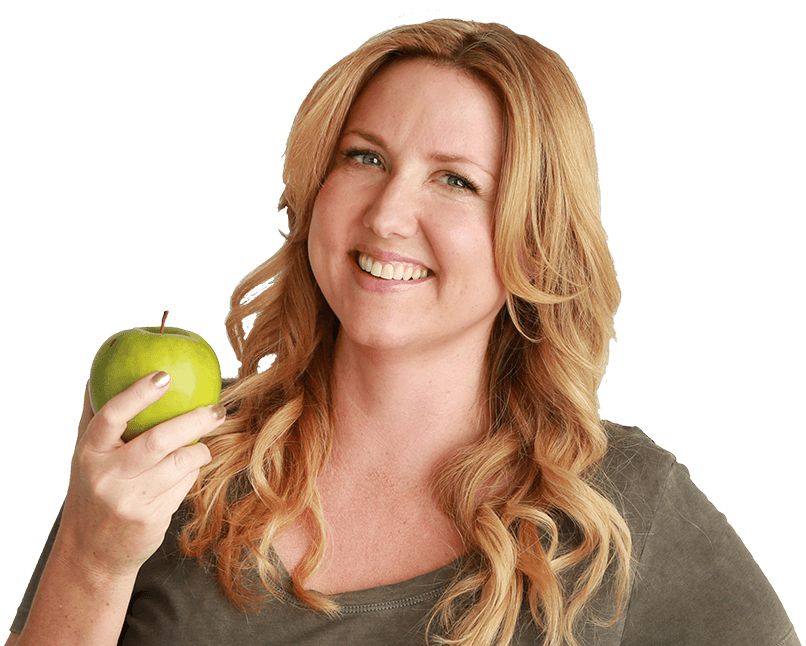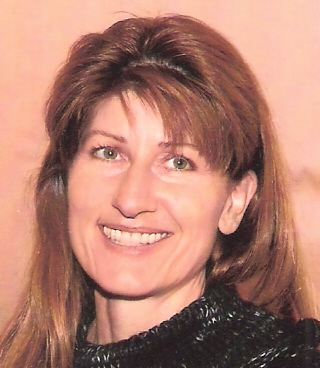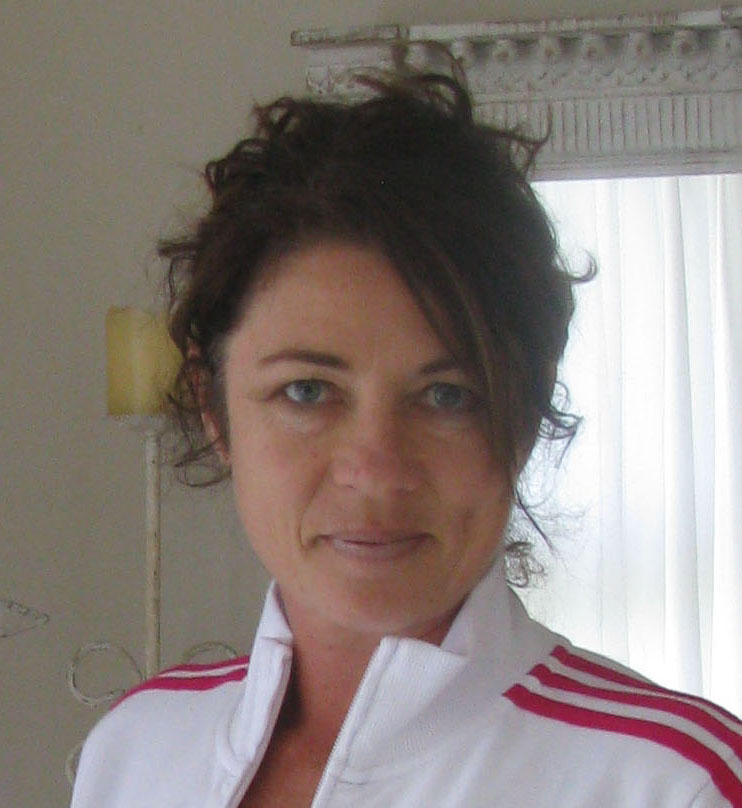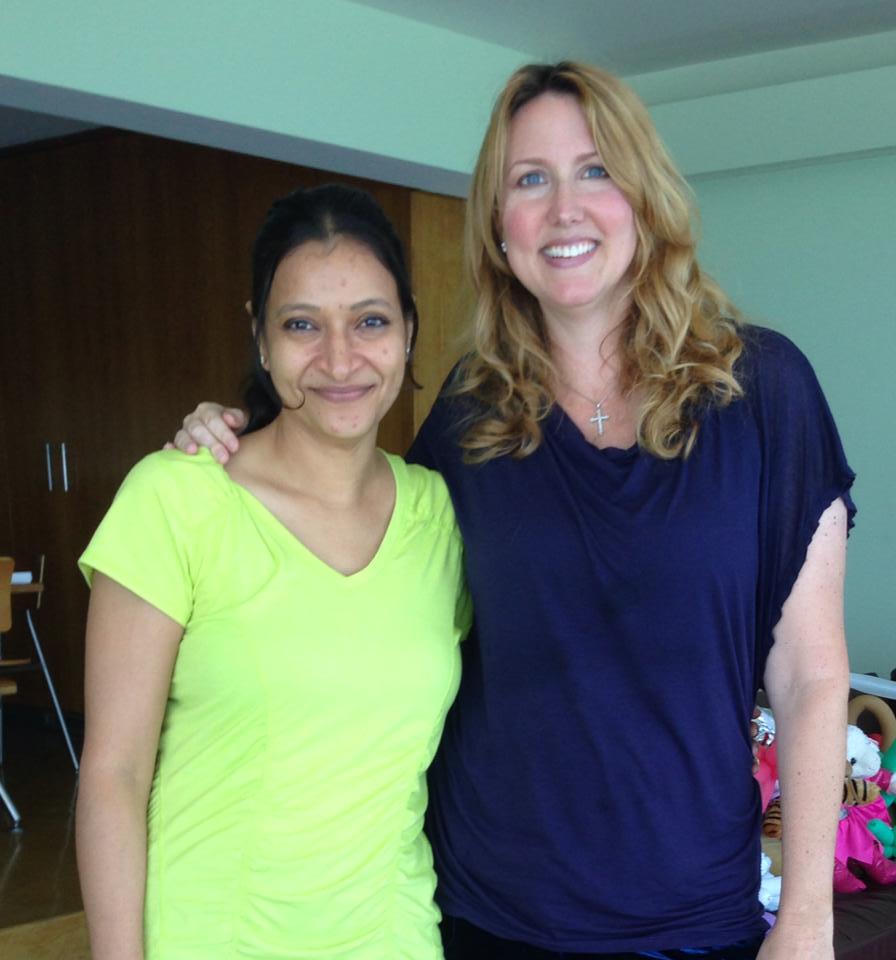Listen
Listen to this podcast or watch the video. CLICK HERE
Transcript
Top Takeaways
- Carol is an occupational therapist of 23 years, and began her work in neuroplasticity after she had two children born with type 1 diabetes caused from autoimmune dysregulation.
- She began to work as an OT in her children’s school so that she could be near if they needed help, and soon realized that there were many children in different states of neurological dysfunction.
- This lead Carol to start to research all the best methods and neuroplastic tools to help with these various conditions.
- When applying their neuroplastic protocols, Carol’s team figures out what your defects are through assessments, and then uses tools to fill your central nervous system with the most organizing input in the world, that can help rewire the brain.
- Carol addresses brain fog, brain dysfunction, and depression, by first using sound frequencies intended to calm the autonomic nervous system, which allows people to better engage and communicate on a social level, one of the first things needed for rehabilitation of many neurological disfunctions.
- She uses the 5-day Safe and Sound Protocol, where the individual listens to frequencies for 1 hour a day that exercises the muscles in a very specific fashion, which allows for the prosodic features in the music to pass through the tympanic membrane and reach the vagus nerve.
- Communicating with the vagus nerve can help regulate all the muscles of the face, the visceral organs, your heart rate, your breath regulation, as well as the gastrointestinal track, and elimination.
- To begin this protocol that begins to reset your vagus nerve, Carol’s team conveniently ships the device to your house.
- This protocol is based around the polyvagal theory, where once you calm the vagus nerve, it allows for the social portal of the human system to be able to be expressed.
- Once a patient reaches this calmed state Carol and her team can then help retrain the brain out of the negative cycles, using a different tool.
- Carols alpha stem sound device helps produce alpha waves in the brain, which combat anxiety, insomnia, and depression.
- Their focus program device can change IQ points and can help people gain years of language, arts, and math skills.
- To learn more about Carol’s work, therapies at Brain Harmony, and schedule a free consultation Click Here!
Wendy Myers: Hello, everyone. My name is Wendy Myers. Welcome to the Myers Detox Podcast, where we talk about everything related to heavy metal detoxification, detox protocols, and alternative methods of addressing your health issues. Today we have Carol Garner-Houston on the show, and she is going to be talking about reversing brain fog, and fatigue, and brain health issues with sound frequencies and alpha waves. She has lots of very interesting ways that she addresses brain-related sensory issues and malfunctioning, and has dramatically positive outcomes in working with adults and children with autism spectrum, sensory processing issues, OCD, and even has a patient that’s 98 years old that wants to improve their brain functioning.
Wendy Myers: So it’s a really, really interesting show today. We are going to be talking about sound frequencies and how these are used in Carol’s methods, and how stimulating the vagus nerve can be critical to reducing stress and positive health outcomes, and how to improve outcomes for adults and children suffering from anxiety, ADD, OCD, ASD, autism spectrum, by addressing neuroplasticity, using brain brainwaves to calm the nervous system and reduce stress, and Carol’s approach to improving learning ability and information retention in children and adults. We all want that, right?
Wendy Myers: So on the show, we’re going to be talking about all these different modalities, lots of stories, lots of testimonials and outcomes that people have when using Carol’s methods, which are, brilliantly, all sent to you at home. You do the assessment online. All the modalities that she uses are sent to you at home, so you can receive help anywhere, receive treatment and her protocols anywhere in the United States, I believe. And she has tons of occupational therapists working with her to help deliver these methods, which I love, because that’s what we do here at Myers Detox, is everything we do, we can reach anyone, anywhere in the world. And so that’s how I wanted to set things up.
Wendy Myers: So I know many of you guys listening to this podcast are really concerned about heavy metal toxicity, wondering what your levels are, “Where do I start?” So I created a quiz, it’s called heavymetalsquiz.com, where it’s a two-minute assessment of your relative levels of heavy metals that you have in your body. So fill out this questionnaire, only takes a couple seconds, and then you get your quiz results, whether you have high, low, or medium levels of heavy metals based on your lifestyle factors. And then from there, you get a free video series, educational series, that talks about where to get started next, what you should do, what are the best methods to reduce your heavy metal burden in your body, and information about testing. So just lots of great videos I created. So check it out at heavymetalsquiz.com.
Wendy Myers: Our guest today, Carol Garner-Houston, is an occupational therapist with 23 years of experience in treating neurological disorders without pharmaceuticals. She is the co-founder and chief medical officer of brainharmony.com, which specializes in applying the principles of neuroplasticity to the brain through the experienced hands of occupational therapists. Her company provides life-changing interventions, with a nationwide home program which allows for the tools to be shipped to the home, with an assigned therapist to coach the family through the program via telemedicine.
Wendy Myers: Her outcomes are the best in the world, with clients gaining years worth of skills in several months’ timeframe. She specializes in neurological disorders, including PTSD, post-traumatic stress disorder, anxiety, sensory and auditory processing, stress and sleep, speech and communication, executive function, behavior issues, autism spectrum, attention regulation, learning and dyslexia, traumatic brain injury, stroke, and Parkinson’s. She resides with her husband of 20 years with two children and their rescued hound dog in Santa Rosa Beach, Florida. And she’s also the recipient of a Health System Innovation Award from the National Association of Public Hospitals and Health Systems, serving vulnerable populations. You can learn more about Carol’s work and therapies at brainharmony.com.
Wendy Myers: Carol, thank you so much for coming on the show.
Carol G.-H.: Thank you so much for having me, Wendy. I’ve been looking forward to it.
Wendy Myers: Yeah. So tell me a little bit about your story and how you got into the health industry, and what you’re doing today.
Carol G.-H.: Well, I am an occupational therapist, and I have been one for 23 years. But working in the realm of neuroplasticity really did not begin until I had my children. And then we apparently won the type-one diabetic lottery, with no family history, just part of that autoimmune dysregulation that is really affecting so many people. In our case, it was both of our children were diagnosed as type-one diabetics. So my husband and I were doing 24-hour medical care with two children under the age of five. And so that really does bring you into a different space as far as raising children, embracing the conventional medical model, and trying to find our way out of this very difficult circumstance that we were dealt.
Carol G.-H.: In that process, we were looking at different ways to keep all the toxins out of the system to help to improve their immune system, and to help them to manage this in every aspect of their life. But particularly, it was difficult in regards to school. You just can’t drop off a two-year-old little boy who’s an insulin-dependent type-one diabetic at school. So I chose to volunteer at the school. That way, I could use my OT skills to help the children with typical OT things, but I could also be available for my son for blood sugar needs.
Carol G.-H.: But what I found with that, when I was in the classrooms, there were so many children in different states of neurological dysfunction. There were several that couldn’t read. Then there were those who couldn’t write. Then there was a child who couldn’t contain their energy, and they were essentially on the ceiling. And then there were those who were just very sedated and just very lethargic, and it was very hard to get those to even engage. So there was this huge realm of circumstances, and it just was not what I had expected as far as child development. So we set out on a mission to find a better way. And through my OT background, I went to search all the different protocols, all the modalities, the best therapists in the world who could help, not only the circumstance that we were in, but also for these other families as well.
Carol G.-H.: And that’s when we began to use some of these neuroplastic tools that are changing everything in the rehabilitation of typical diagnoses, including those after insult or injury. And from there, and from those experiences with our own children, and feeling so lost, and not having all the good information, and just so not moving forward with that beautiful quality of health that you would expect or desire for your family, and these two tools really have blown our minds as far as the outcomes because they go so deep in the neurological system, what we can do to change the brain. And regardless of age, because we started with children, but because of the neuroplasticity of the brain, the brain knows no age, it knows no diagnoses. So our oldest client is 98. And-
Wendy Myers: Oh, wow. I love it.
Carol G.-H.: Yep. So we find out, we figure out what your deficits are. We can do an assessment, find out those basic indicators. And then we will fill your central nervous system with the most organizing input in the world, and then watch what happens as far as outcomes and functional improvement.
Wendy Myers: Okay, awesome. So we’re going to focus in on brain fog, depression, which is related to fatigue. But what are some of these underlying causes of these issues that people aren’t aware of? Because I know so many people are struggling with this, and the doctor will just give them medication. And it’s not going to help.
Carol G.-H.: Right. And I do love, from your podcast, I love when you have the tools that you use that can really, in particular, the mitochondria, and to detox the system. The work that you’re doing is on the cellular level. And that can provide all kinds of amazing outcomes for people, regardless of diagnoses, but definitely had that heavy metal theme in there, the cellular dysfunction. When you layer that with the types of tools that we are using to rehab the brain and the neurological system, it really does bring it forward. And a whole new level of healing and recovery can happen when you use those two pieces together.
Wendy Myers: And so you address, or you use sound frequencies to address brain fog and brain dysfunction, depression. So how does that work?
Carol G.-H.: The first thing that we do for our friends who have fatigue and brain fog, we take some intake paperwork and we figure out all the different pieces that are here and impacting you. But when we go in, we use sound frequencies that are intended to first calm the autonomic nervous system. That is the very first and primary need for all of us as humans, to have that neurological calm. It’s not the perception that I’m safe, it’s the feeling of being safe. It’s actually an anatomical feature. As humans, we are all intended to be social creatures to survive. And to be social creatures, and to depend on each other and communicate with verbal or nonverbal ways, we need to have that safety and security that will allow for the expression of the social being.
Carol G.-H.: So we use several different tools to first comfort the individual’s brain and neurological system. One of the tools we use with sound frequencies is called the safe and sound protocol. It was developed by Dr. Porges, and he has created the polyvagal theory that helps us understand how much we can impact the neurological system through the use of the vagus nerve and vagus regulation. And he has books, and his information is very dense in his study as far as evolution, and how we’ve moved from a reptilian brain into more of a mammalian, and what that means for the vagus nerve. And specifically, what branched out there is the ability to be a social creature, which is unique to the mammals, as well as to be social. And that is such an important piece to evolution, and that higher evolution that we’re going for.
Carol G.-H.: So with brain fog, and depression, and fatigue, you can see how that can be very dysregulated, it can disrupt your sleep and wake cycle. So we go straight in there and we calm it with the safe and sound. We use, it’s a five-day listening protocol, we use sound frequencies, and the individual listens for one hour a day. And it will exercise the muscles in a very specific fashion that will allow for the prosodic features in the music to pass through the tympanic membrane and reach the vagus nerve. When it reaches the vagus nerve, we can regulate all kinds of different things because of the connections that the vagus nerve has, not only with all the muscles of the face, but the visceral organs, like your heart rate and your breath regulation, as well as below the diaphragm as far as the gastrointestinal track is concerned, and the elimination.
Carol G.-H.: So you can essentially build up the resiliency of this vagus nerve to be able to use all of the different pieces that, as humans, we are intended to have, but for whatever reason, it may be blunted, or maybe it hadn’t been activated very well to begin with, as we see frequently with our children these days. So that’s how we start is with vagal regulation, usually with the safe and sound protocol.
Wendy Myers: Yeah, and I love that because I’ve been reading a lot about how vagal nerve stimulation is really powerful to help reducing stress. Because a lot of people that are having issues with recovery, like they’re trying different things, or they’re trying to detox, if they’re stressed, if their nervous system is in sympathetic dominance overdrive where their foot’s on the gas pedal, they’re tired but wired, they can’t sleep, they can’t get better. That’s one of the fundamental things I do when I’m working with clients in my Myers detox protocol is taking people from here, and just calming everything down. And there’s a lot of different ways to do that, but stimulating the vagus nerve, there’s a lot of interesting research going on with what you’re doing, to address this in such a non-invasive, simple way.
Carol G.-H.: I love it. And you said it so beautifully. And that is one of the many joys is that we have this tool now that does it so gently, that can do it in the privacy of your own home because we will ship you that tool, and I will help you open the box, I will walk you through setting it up, how to set up a very successful session, an experience in your home, which allows for accessibility to care, right? Because sometimes some of these things are so wonderful but they’re so far from us, or even in regards to fatigue, and brain fog, and depression, medications are one thing, or going to see a counselor is another, but it’s all very outside of what the person can control. You have to get up, you have to go, you have to have the certain circumstances to move correctly, to begin to see any progress. Instead, we bring this into your home and you start that reset with the vagus nerve, very deep reorganization.
Carol G.-H.: And what’s so beautiful in regards to this vagal regulation has to specifically do with Porges’s polyvagal theory. What’s important about that is, just as you were mentioning how you put the brakes on things, you can go faster and slower, the polyvagal theory really does have to do with the human being able to control just how far they have to pull off of the defense system to allow for that social prosodic features to then arise so you can better engage and better communicate.
Carol G.-H.: So we start that, safety first, really helping that neurological system. With that, in the polyvagal theory though, it’s not just connected to the organs, it’s also connected to the social portal of the human system. And that’s very exciting because it’s not just how you feel from a cognitive standpoint, like in in a psychiatry realm where you would talk through it, maybe if it was there was trauma in the past, you work through the traumatic event, and then you’re coping, and then you move on. Well, for so many, that’s just not even … they can’t even get to that point yet. So with the polyvagal theory, we can reset that so that, once you calm it, it allows for the social portal of the human system to be able to be expressed.
Carol G.-H.: And it’s an anatomical feature. They’re not just words, they’re not just diagnostic … they’re not just terms in a book. It is an anatomical feature, and as humans, it’s unique for us to survive. You have to be able to tolerate touch and snuggle for breastfeeding, and for nonverbal communication. You have to be able to communicate and work well with people to build your home, to get your groceries taken care, basic needs. But when that portal is disrupted, you’re right, the recovering sleep won’t be there. The ability for the system to do that recovery when they’re not in fight or flight, because if you’re just run, run, run, run, run, run, run all the time, which so many of us are familiar with, you’re using all your reserves and there’s nothing that’s restorative, including your sleep.
Carol G.-H.: So you go in and you reset with this five-day pulse, it calms, then it’s activating your social portal of human engagement. That’s some of our favorite phone calls to hear how that’s being expressed for different children and different families. For some, it’s a child hugging her dad when he came home from work. And this child is not a hugger. This is when a wife is just more affectionate, maybe with handholding or verbalizing. It opens this portal, and the individual can begin to communicate on a deeper level, engage at such a higher quality human level. There’s more textures, and there’s more subtlety, and humor, and in voices, and in facial expressions. So it’s a beautiful start to the rehab process.
Carol G.-H.: Once we do that, then we can begin to retrain the brain out of those negative cyclical cycles, so much with the fatigue, and with the depression, and with the brain fog. It’s just, you’re stuck. And you just kind of stay in this perpetual state that’s not moving forward. We can roll in sound frequencies then with a different tool, and these are very specific sound frequencies that have been set to do very specific things in the brain. One of the first things we’ll do is make sure that we’ve reconnected the brain/body, we really want that balance, emotional regulation, behavior. All of those things are a reflection of the state of the neurological system.
Carol G.-H.: So we go in deep with the vagus, and then we calm and stimulate the brain with more sound frequencies to build the highway pass of efficiency through all parts of the brain so that when that individual is in that negative cycle or that negative thought … We have that in the brain, right? It’s very well-built. It’s a very deep groove, and it goes around and around. Well, when you come in with these tools, it literally is building connections in the brain. We change IQ points. We are building the highway pass. And when they connect, then when you’re in that negative loop, your brain goes around and says, “Oh, there could be another way.” And just that option of going this way, and having more of the support from your central nervous system and brain, you’re able to do things.
Carol G.-H.: Once we layer those in, we can then go to some higher frequencies. And it’s our higher frequencies that we use with our friends who need more creativity, motivation, executive functioning. They may have all these ideas, but they can’t get them organized enough to say, “Okay, this is what I want to do, but these are the steps to do it.” Now they need something to help get them to that next step where they’re actually executing it. And then they’re going to be following through with it. And then from there, there’s the growth and the joy and the beauty that people are hoping for and expecting.
Carol G.-H.: Very similar, I feel, like when you were talking about how you felt before you would do these detoxes, and how you knew you weren’t well, and you were taking all of these wonderful supplements, but you weren’t getting to the real root, and then, once you did, you just felt better, but you feel better from the inside out. And it really does change your perspective on everything as you move forward, because now you only see options and possibilities.
Wendy Myers: Oh, yes. Yeah. I love high-tech things like this, or things that are very, very simple, very effective, that you can do in-home, because that is key for so many people. That’s why everything that we do at Myers Detox, you can do it at home. So [crosstalk 00:21:44] you can reach anyone, anywhere in the world. I love that.
Wendy Myers: And so let’s talk about some of these high-tech options. So you start with the sound frequency, but you have other things that you do. So what are some of these other options that people can utilize for optimal brain health, trauma recovery, and other things you address related to the brain?
Carol G.-H.: Absolutely. So just like detox is an important part of all kinds of other diagnoses, there are basic neurological indicators that we need to have in place for anyone to heal, regardless of diagnoses. So yes, we use that safe and sound protocol to get that vagal regulation. We also use a beautiful tool, which I was just using, I had it on right before we started recording, it’s called the Alpha Stim. Very easy, you clip it to your ears. I put it in my pocket and I was walking around getting ready for our talk today. And it helps to produce the alpha waves in the brain, which combat anxiety, insomnia, and depression. So it’s the feel-good brain waves. And we’re intended to produce them. So you can just very easily clip those on, and your brain starts to get the input, and you can relax. Again, we’re back to calming my system so that I can be creative and use all of this information to share with you.
Carol G.-H.: So we use this Alpha Stim in the clinic setting. We also send it to our friends in the home. It’s an immediate way to de-escalate, which our daily lives, especially if you’re caring for someone with chronic illnesses, or you, yourself, have one, that Alpha Stim can really be a quality of life and life saver. So drastic that a good example would be, I was caring for a young child, and the two parents, just very precious family, and they have several children, but one of the children, unfortunately, passed away. And I went to the funeral. And when I walked in the door, the parents greeted me, and the first thing they said of course was, “Thank you for coming.” But the very next thing they said was, “Thank you for bringing the Alpha Stim to us. It has really helped us get through this day and the days after.”
Carol G.-H.: So it shows you the impact that a simple, easy tool, easy neuroplastic tool that can fit in your pocket, can really make some changes for you to help just move you into that next space. Because life just keeps going, regardless of the trauma, regardless of the loss. So let’s help ourselves feel the best, function as best we can, and move forward. And these tools really help us do that. So the Alpha Stim is a wonderful, wonderful technology piece that we just can’t say enough about. I use it in a clinic setting as well.
Carol G.-H.: We had a little friend that I treated for a very long time, before I even knew Alpha Stim existed, she was non-verbal, on the spectrum, a very sensory-defensive child, kind of fit those very typical categories for that diagnoses. Very, very difficult to do therapy and to get progress because she cried a lot, and she couldn’t communicate, and she did lots of pacing in the room. So instead, once I began to learn about the Alpha Stim, I had it in the waiting room for the caregivers, because, goodness, I could do all this great work with the children, but the caregivers were just as distraught as the children in a different way though, right? Because they’ve been carrying the circumstances of their children.
Carol G.-H.: So I left the Alpha Stim out there for the moms and dads. They started feeling better. So I called the company and I said, “Please tell me I can use this with children,” and they said that I could. So I used it with this first little friend. And they’re ear clips, and so we weren’t quite sure how we were going to get it on this little friend. And she had this cute little ladybug backpack, so we let her keep the backpack on, and put the Alpha Stim in the back. And I came from behind her and quickly clipped the ear clips on, and she stopped crying. And the silence was so joyful.
Carol G.-H.: And the mom’s looking at me, and I’m looking at her, and I couldn’t be more excited. But at the same time, I was almost a little frustrated after she left because I thought to myself, “Where has this been? Why have not I had access to this? And why am I, just because I’m doing all this extra research and I happened to have been taught this, and I happened to have embraced this tool, that we were able then to change the trajectory of this child from that moment moving forward?” Because once we could calm her, then we could do all kinds of the major rehabilitation.
Carol G.-H.: And of course, when she went to speech therapy, the speech therapist comes out and says, “What did you do? Whatever you did, you got to make sure you do it again. That was the best speech therapy session we’ve ever had.” Well, of course it was. She was calm, and her brain knew that she was safe so that when she was attempting to do the task, the speech therapist needed to her to do, she was more able to try and follow through with it. So that’s another high-tech tool that I use a lot. And I know for brain fog, and for depression, and fatigue as well, it can soften those edges so that you can just keep moving. You can go ahead and do what’s on your task list for that day. It softens the edges so you can move forward. So I love that tool.
Carol G.-H.: But then, further, the rock-star tool that changed our entire business protocol, that changed how I approach any individual in the rehabilitation process, is the use of the focus program. It’s a tool developed by Integrated Listening Systems and Dr. Ron Minson and his wife, Kate. And I’ve spent years with them, embracing this tool and all of what frequencies can do, and how you can impact the brain in very specific ways, and how you can retrain the brain with the highway pass of efficiency, and you can walk people out of diagnostic codes, and they can then function on a level that they never thought possible before.
Carol G.-H.: And it’s that focus program that really is the brain changer. We’re seeing it change IQ points. We’re seeing individuals gain years worth of language arts and math skills. I do not teach language arts. I do not teach math. Essentially, what I’ve come to understand are those are skills that are a reflection of the state of the brain. If you need the matrix in your mind to be able to absorb the information, to store it in the correct parts of the brain, and then retrieve it for written, verbal, or nonverbal output, that’s how those skills are developed. Some of us are super lucky, and you just, you’re born with good genetics, and then life goes on, and those things are just easy for you. You know who those people are. They sat next to you in the classroom.
Carol G.-H.: But what about those of us who, for whatever reason, it just wasn’t clicking. It’s not going in. Is it an auditory processing, is it a sensory processing disorder where your regulation state is so you high-level that you’re missing bits and pieces? Is it the behavior? There are so many different pieces of the neurological system that have to be intact for the individuals to perform at a level that you expect. And it’s that focus program that we can pinpoint very specific functions in the brain with the use of them.
Wendy Myers: Oh that’s great. Because I know you always think of your child in school, and concerned if maybe they don’t do well in one area. And we know people and children learn, or maybe are stronger when they’re learning visually, or when they hear it auditorily, or when they’re reading something, or when they’re physically doing it. People can learn better when they’re actually doing a project, as opposed to reading it in a book. So there’s different ways that people absorb information, so why not optimize the ability to do that?
Carol G.-H.: Yes. And that’s what we do. And what’s so nice is, is that there’s so much suffering in regards to what you’re saying is when … There’s the struggle when you can’t do what you are intending to do, or what you’re expected to do. There’s so much suffering. And I love to be able to walk in and be like, “Okay, give me your list. Tell me all of it. I need to know everything that’s not working well for you.” And then we will customize their listening program, and we will ship them the modalities, and I will coach them how to use them to bring about the neurological organization, which is where that function and quality of life is that we all are seeking so much.
Wendy Myers: And so, let’s talk about neuroplasticity. I mean, we used to think that the brain, we’re just born … how the brain was born, and there was no changing it. We didn’t grow new brain cells. This was a while ago, okay? I’m old [crosstalk 00:30:53]-
Carol G.-H.: Me too [crosstalk 00:30:54]-
Wendy Myers: But medicine used to think that. So let’s talk about neuroplasticity and how that’s changing recovery outcomes for common diagnoses like anxiety, ADD, attention deficit disorder, OCD, obsessive compulsive disorder, and ASD, which is autism spectrum disorder.
Carol G.-H.: Yes. So the neuroplasticity of the brain, essentially, Dr. Ron Minson taught me all about that with the use of their tools. But a good way to explain it is with that book by Dr. Doidge, which is The Brain That Changes Itself. It’s a beautiful story. It’s a New York Times bestseller. Lots of people can identify with it. Well, the neuroplasticity pretty much means that you can change the brain based upon the input that it’s given. So if you are not doing anything to change your brain, and you’re staying in the same cycle, then you can probably expect there not to be much change, and that you’ll continue to go in this asymmetrical type of limping along. However, once you provide the brain and the neurological system with these types of tools, you can change the outcome.
Carol G.-H.: And Dr. Doidge came to speak at one of the advanced training for Integrated Listening Systems, and he was speaking, and he had a big projector, and he was showing all of these outcomes with the use of similar neuroplastic tools. And he was showing before, a friend on the spectrum, and how the individual was speaking as he interviewed with him, and then some of the tools that they used. And then they had the individual using lots of animation, and eye contact, and facial expression, and all of these, right … This theme that you heard us talk about earlier, that vagal intervention, right? It’s been stimulated and regulated a bit. You can do these types of things.
Carol G.-H.: So when we saw that up there … And also, a friend in his story had Parkinson’s and all of the characteristics that go with that, but then started using these types of tools, and then that friend with Parkinson’s could skip across wet rocks at the beach and not fall, with rhythm and symmetry in their movements. Well, everybody in the audience was gasping with amazement, like, “I can’t believe it.” Every time one of those after videos would come up, well, my sister, who is also my business partner, was sitting next to me, and we’re looking at each other, and we’re like, “That was Johnny last weekend.” And then we’re like, we’re listening, and then they would show another amazing story, like, “Hey, so-and-so did that same exact thing.” And we just started to giggle because we realized that we were on the cutting edge of brain science, and we were the neuroplasticians, and we were changing the brains for these families with the outcomes that the world has really never seen before.
Carol G.-H.: And so, my neuro-plasticity baptism into this realm has really been the most exciting chapter for my family, to pull us out of those circumstances that we were in, as well as for all of our friends that we now care for. We care for all 50 states. We have therapists who are available in our telemedicine platform to do this in all 50 states. So we can help the individuals have access to these tools in the privacy of their own home. And we coach you through opening the box, and layering it into your weekly routine, and finding super fun things to do for yourself and your family members so that everyone then can take a step forward in development and neurological soundness.
Wendy Myers: Yes, yeah. So tell us, where can we learn more about working with you, about these technologies, and how to work with you?
Carol G.-H.: We have a beautiful website that a dear friend, mutual friend of ours, really, he just changed how we present things. And so, I encourage you to go to brainharmony.com, where we have beautiful video testimonies, so you get to hear from people who have actually using these tools on where they were before they started our programs, and where they are now. We have many adults, and all the way through children. So that website gives you beautiful testimonies.
Carol G.-H.: It also gives you a beautiful science tab. And the science is of course my favorite. That’s where my blood, sweat, and tears, and all of my career work, and the case studies, and the research is all on that science tab. And as you scroll down, it begins to teach you how we organize the system from a bottom-up approach. And it has different characteristics and diagnostic codes. So maybe you are looking for better regulation for auditory processing, or maybe you’re doing stroke recovery, or traumatic brain, post-concussive syndrome. You can click on that tab, and we will show you the case studies of before and after outcomes with the use of our programs and these tools, along with just as much research, as deep as you want to go. And I just keep layering in more things in there for you to help you to understand.
Carol G.-H.: And the perspective change that, yes, you may have these certain circumstances. And yes, it’s impairing your ability to live the highest quality of life that you can. But you don’t have to be stuck there. That just happens to be where you are. You can then, you can schedule a consultation with us. There’s a link on that website as well, and you get on the phone with us, we’ll get what your primary concerns are. And then I will customize a program for you to help you out of the circumstance that you’re in.
Wendy Myers: Okay, fantastic. Well, guys, you know where to go now if you want to get a better brain. So thank you so much for coming on the show. Is there any kind of closing thoughts or any kind of juicy tidbit you want to share with the listeners?
Carol G.-H.: Juicy tidbit is, with all of my being, the most beautiful way to recover and to get that best quality health you’re looking for is when you pair the cellular repair of what you do, with the neurological rehabilitation that I do. From there, just amazing things happen.
Wendy Myers: Fantastic. Well, thank you so much, Carol, for coming on the show. Everyone, go check out brainharmony.com. And thanks so much for tuning in every week where, on the Myers Detox Podcast, we discuss all kinds of topics related to heavy metal and chemical detoxification, and supplementation, and protocols, and lots of different ways to bio-hack your health, things you’re not going to hear at your conventional medical doctor, where most people seek help. So thanks so much for tuning in. I’ll talk to you guys next week.














